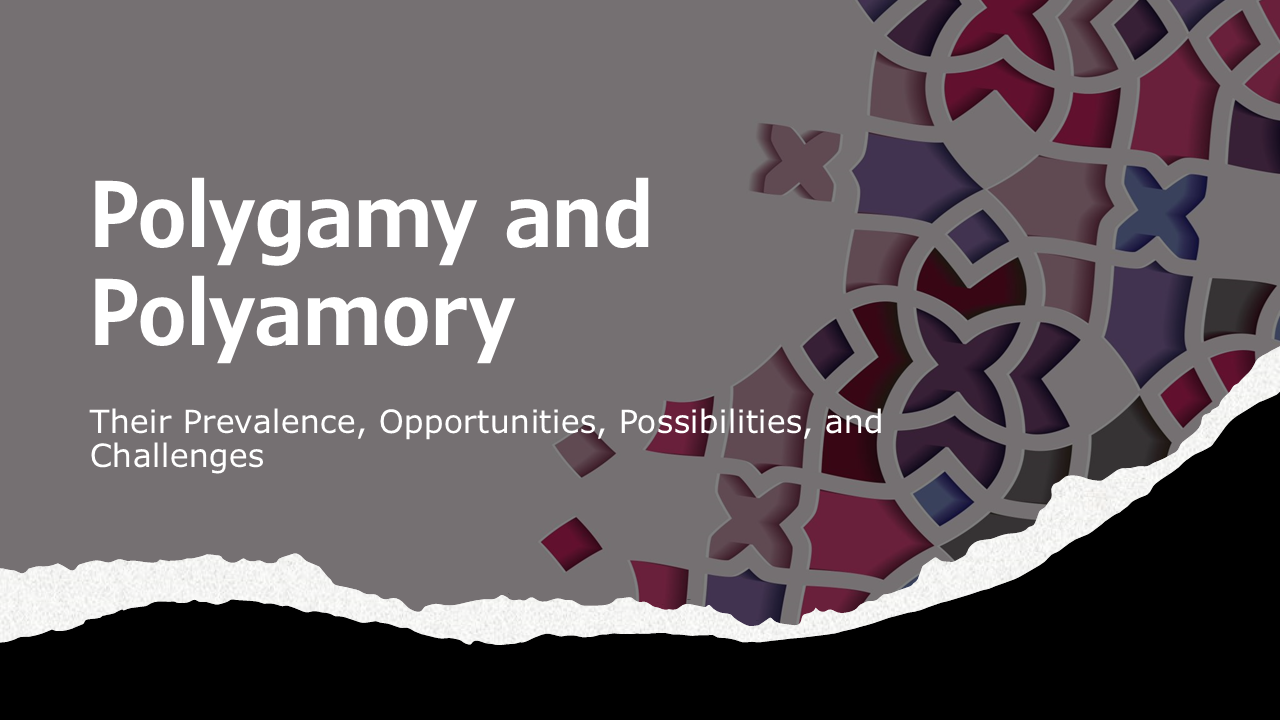What is polygamy, and what is polyamory? And how do people feel about being in polygamous and polyamorous relationships in modern-day societies, cultures, and subcultures? Let’s consider what these types of relationships are, how they are similar, and how they are different. Let’s also consider how modern men and women feel about being in these types of relationships.
How Is Polygamy Different from Polyamory?
First, what are polygamy and polygamous relationships?
Polygamy refers to non-monogamous marital relationships in which a spouse has more than one other spouse at the same time. In some cases, a man has two or more wives; it is polygyny; in other cases, a woman has two or more husbands; it is polyandry. The terms polygamous relationship and polygamy refer to a consensual marital arrangement of a relationship. Polygamy has been practiced in many cultures and religions throughout history but is currently officially prohibited in many countries.
Second, what are polyamory and polyamorous relationships?
The term polyamory refers to various forms of non-exclusive sexual or romantic relationships with two or more partners. Polyamorous relationships are consensual non-monogamous relationships, without the need for marriage. This kind of relationship has been condemned for centuries as morally wrong, according to cultural norms of monogamy. However, these relationships have increased their visibility and acceptance recently.
You can read a more detailed comparison of the main differences between polygamy and polyamory in this article.
How Does a Spouse Feel About Being in Polygamous Relationships?
Recently, public, political, and academic awareness of modern polygamy has become notable. In many countries with Muslim cultures, polygamy is officially acceptable; yet in many of them, these practices are rare (Kramer, 2020). Polygamy is present mostly in a few regions of the world, and only about 2% of the global population lives in polygamous households.
The cultures of many countries with Muslim majorities permit polygamy, but the practices are rare in many of these societies (Kramer, 2020).
How do spouses feel when they are in polygamous relationships? How do they feel about being in such a relationship? Do they like it, or do they not? I presented the examples of the modern-day emotional challenges of living in polygamous marriages in two societies, South Kalimantan and East Java, based on the study of Muhammad Rezki, Sandy Aditya Pradana, and Latipun from the University of Muhammadiyah Malang, Indonesia.
Their qualitative analysis indicated that second wives perceive their polygamous marriages as a fate determined by God. They also accept these polygamous relationships because of economic necessity or other life circumstances.
Nevertheless, they encounter psychological problems, such as irritability, emotional distress, jealousy, persistent complaints, emotional volatility, and discontent. The additional emotional effects encompass frustration, heartbreak, anxiety, feelings of inferiority, and restlessness. Economic conditions also affect polygamous marriages, as financial dependence introduces further stress.
Another article describes the emotional problems that second wives encounter in polygamous marriages and the factors that contribute to marital quality.
How Do Partners Feel About Being in Polyamorous Relationships?
Polyamory appears to be a new form of love and relationship that is an alternative to traditional monogamous romantic love. In many contemporary societies, polyamory is becoming more prevalent.
While specific statistics of global prevalence are limited, polyamory might be more common than we may think.
For example, according to a Pew Research survey of 2023, more than 50% of Americans under the age of 30 consider an open marriage an acceptable form of relationship. Polyamory is more common than we might think. Roughly about 4-5% of the American people practice polyamorous relationships. Moreover, 1 out of 9 American respondents have already been engaged in a polyamorous relationship, according to a study by the Kinsey Institute.
In the UK, a 2019 YouGov survey found that 7% of adults had been involved in consensual non-monogamous relationships.
Popular media in many countries increasingly portray polyamorous relationships, thus contributing to their growing interest and visibility. This practice of engaging in several loving and consensual relationships without the need for marriage emphasizes open communication, mutual consent, and equality among all partners involved.
Some researchers believe that polyamory is unlikely to be viable in the long term. Who knows? Social scientific views highlight the problems with polyamory. We’ll see.
References
Rezki, M., Pradana, S. A., & Latipun (2024). Journeying the shoreline of emotions: Unveiling the lives of wives in challenging polygamous relationships. Social Science and Humanities Journal, 8 (8). Everant Publisher, India.
Kramer, S. (2020). Polygamy is rare around the world and mostly confined to a few regions. Pew Research Center. https://www. pewresearch.org/fact-tank/2020/12/07/polygamy-is-rare-around-the-world-and-mostly-confined-to-a-few-regions/ (accessed 3 October, 2022).
